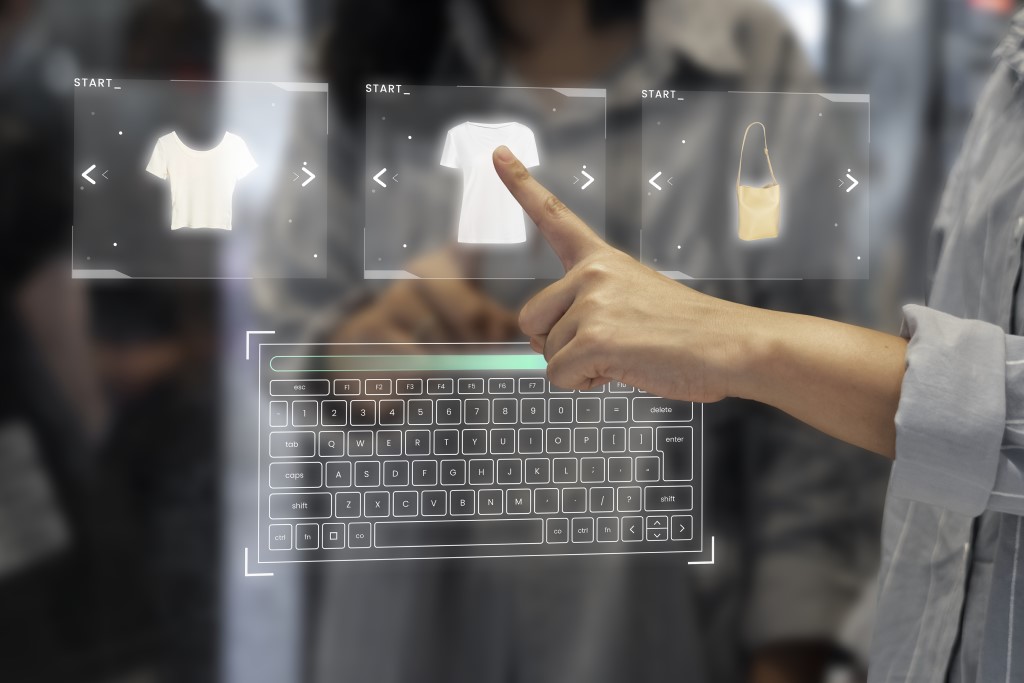In the fast-developing world, the growth of technology is seen almost as a race among humanity. The world quite quickly moved to the internet with its advent and subsequent rapid spread and reach, which ultimately changed the map of the world in terms of connectivity and convenience. The trends have shifted from one to another quite quicker than the world expected. Lately, e-commerce has taken over the world, and now there’s curiosity in people regarding the emergence of virtual shopping. Let us discuss whether “virtual” shopping can be a “reality.”

The Shift to E-commerce:
Mankind is always looking forward to the next major technological advancement, which can make their lives more convenient, interesting, and cost-efficient. People are inquisitive about how technology will further revolutionize their lives in the coming years. It’s a matter of excitement for many.
With the widespread use of the internet came the opportunity for businesses to reach larger audiences cost-efficiently through e-commerce. There also came convenience for the consumers with that. Over the last few years, ecommerce development services are more popular and e-commerce has now become the primal way of shopping for people. Today buying from ecommerce websites is so easy that people prioritize it over shopping offline from stores. Going to stores has now become an alternative priority, whereas, in the beginning, it was the other way around.
Overall, this minimized the “cost of presence” that the companies used to bear because of the need to have physical stores everywhere to attract consumers. Today only a good product and good marketing can do a lot for such companies, almost more than what having physical stores could ever achieve for them. For helping businesses in this venture which is almost a necessity, there have also emerged some of the best eCommerce website development companies and top IT companies of Delhi, and all over the world, which can play a pivotal role in assisting companies in building their e-commerce presence in the very competitive and cluttered market on the internet with strategic planning and execution.
When we think of why e-commerce became the first choice for consumers and businesses, the following justifies its rise:
- Convenience: E-commerce allows people to shop from the comfort of their homes without traveling to physical stores. This has made shopping much more convenient and accessible, especially for those who live in remote areas.
- Wider Selection: Online stores often have a much wider selection of products than traditional brick-and-mortar stores, making it easier for customers to find what they want.
- Competitive Pricing: E-commerce businesses have lower overhead costs than traditional stores, allowing them to offer competitive prices. This has made shopping online an attractive option for cost-conscious consumers.
- Improved User Experience: Online shopping websites have become increasingly user-friendly, with features such as product recommendations, easy-to-use interfaces, and fast checkout processes.
- Increased Accessibility: With the widespread availability of smartphones and high-speed internet, e-commerce has become more accessible to people worldwide.
- Data-Driven Marketing: E-commerce businesses can access vast amounts of data about their customers, which they can use to personalize their marketing efforts and offer customized recommendations.
- Global Reach: E-commerce has opened up new business markets, allowing them to reach customers worldwide. This has made it possible for small businesses to compete globally.
- 24/7 Availability: Online stores are open 24/7, allowing customers to shop anytime or at night. This has greatly increased the accessibility and convenience of shopping online.
What is Virtual Shopping?
Virtual reality (VR) has been one of the world’s most explored and speculated subjects lately. From filmmakers to VR rides at your closest theme park, there has always been a clear indication that people now want to go and explore the next level of immersiveness that technology can provide them while sitting at home. Businesses have taken the hint quickly, and there has been a rise in R&D done on VR shopping. After e-commerce, virtual shopping will be the next culture shift in the shopping paradigm.
Basically, Virtual shopping refers to the process of shopping for products and services through digital platforms, such as websites, mobile applications, and virtual reality experiences. It allows consumers to browse, select, and purchase items without physically visiting a store. Instead, customers can view products, purchase them online, and have the items delivered to their homes or pick them up at a designated location. Virtual shopping offers many benefits, including convenience, the ability to compare prices and products, access to a wider range of items, and the ability to shop at any time of day or night. It has become increasingly popular in recent years, especially due to the COVID-19 pandemic, which has led to more people shopping online to avoid physical contact with others.
Lately, when people have also missed going to the stores to purchase, virtual shopping is a bridge to the experience of physically buying products and the convenience of online shopping. Overall, virtual shopping has revolutionized how people shop and create a new retail era where consumers can access products and services from anywhere in the world at any time and still experience being at the store.
Conclusion
In conclusion, virtual shopping has revolutionized our shopping and has become a popular choice for many consumers. With the convenience of shopping from anywhere, anytime, and accessing a wider range of products, virtual shopping has become a convenient alternative to traditional in-store shopping. Furthermore, with the use of advanced technology, retailers can now provide a more immersive shopping experience with features such as virtual try-ons, interactive product displays, and 360-degree product views.
However, virtual shopping also poses some challenges, such as issues with sizing and fitting, concerns about the authenticity of products, and a need for more tactile interaction with the products. Despite these challenges, the future of virtual shopping is bright, and retailers are continuously working to improve the virtual shopping experience. These challenges can be well-dealt with ease, considering the number of problems encountered and later solved each time while developing a new domain. In the end, virtual shopping is here to stay and is set to play a significant role in the future of retail. Businesses worldwide have realized this fact and are working on bringing virtual shopping to its best version and Avatar to people in the near future.

Author Bio: Jane Hart is a technical writer at Selected firms. She has 5 Years of experience in developing contents and new ideas of presentation for company websites, blog, white papers, business collaterals, and case studies. Experience in writing, rephrasing, proofreading, curating, editing and managing content for both B2C and B2B clients. Has knowledge of best SEO practices to create content as per SEO requirements for better search engine performance. Excellent written and verbal communication skills.